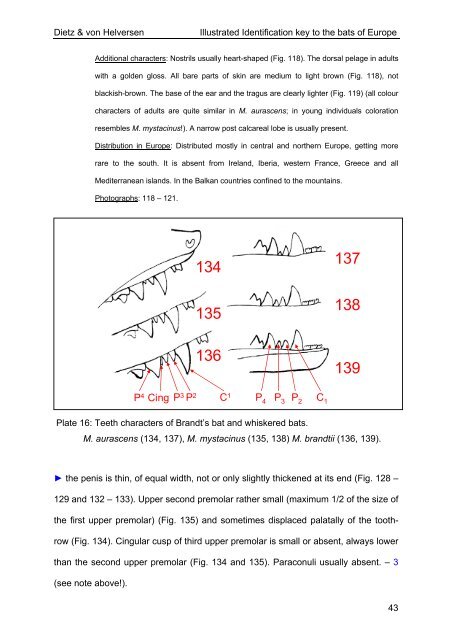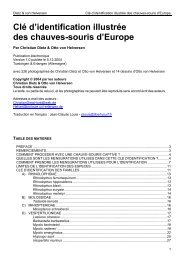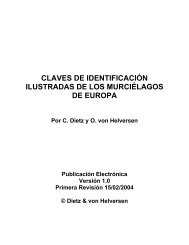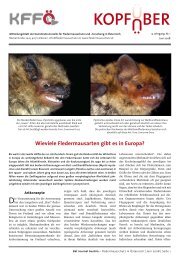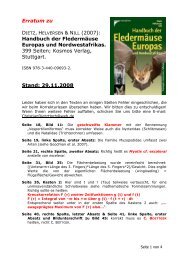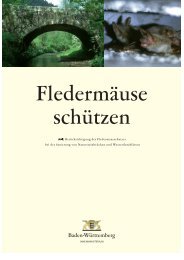Dietz & von Helversen Illustrated Identification key to the bats of ...
Dietz & von Helversen Illustrated Identification key to the bats of ...
Dietz & von Helversen Illustrated Identification key to the bats of ...
Create successful ePaper yourself
Turn your PDF publications into a flip-book with our unique Google optimized e-Paper software.
<strong>Dietz</strong> & <strong>von</strong> <strong>Helversen</strong><strong>Illustrated</strong> <strong>Identification</strong> <strong>key</strong> <strong>to</strong> <strong>the</strong> <strong>bats</strong> <strong>of</strong> EuropeAdditional characters: Nostrils usually heart-shaped (Fig. 118). The dorsal pelage in adultswith a golden gloss. All bare parts <strong>of</strong> skin are medium <strong>to</strong> light brown (Fig. 118), notblackish-brown. The base <strong>of</strong> <strong>the</strong> ear and <strong>the</strong> tragus are clearly lighter (Fig. 119) (all colourcharacters <strong>of</strong> adults are quite similar in M. aurascens; in young individuals colorationresembles M. mystacinus!). A narrow post calcareal lobe is usually present.Distribution in Europe: Distributed mostly in central and nor<strong>the</strong>rn Europe, getting morerare <strong>to</strong> <strong>the</strong> south. It is absent from Ireland, Iberia, western France, Greece and allMediterranean islands. In <strong>the</strong> Balkan countries confined <strong>to</strong> <strong>the</strong> mountains.Pho<strong>to</strong>graphs: 118 – 121.134135136137138139Plate 16: Teeth characters <strong>of</strong> Brandt’s bat and whiskered <strong>bats</strong>.M. aurascens (134, 137), M. mystacinus (135, 138) M. brandtii (136, 139).P 4P 3P 2P 4 Cing P 3 P 2 C 1 C 1► <strong>the</strong> penis is thin, <strong>of</strong> equal width, not or only slightly thickened at its end (Fig. 128 –129 and 132 – 133). Upper second premolar ra<strong>the</strong>r small (maximum 1/2 <strong>of</strong> <strong>the</strong> size <strong>of</strong><strong>the</strong> first upper premolar) (Fig. 135) and sometimes displaced palatally <strong>of</strong> <strong>the</strong> <strong>to</strong>othrow(Fig. 134). Cingular cusp <strong>of</strong> third upper premolar is small or absent, always lowerthan <strong>the</strong> second upper premolar (Fig. 134 and 135). Paraconuli usually absent. – 3(see note above!).43


